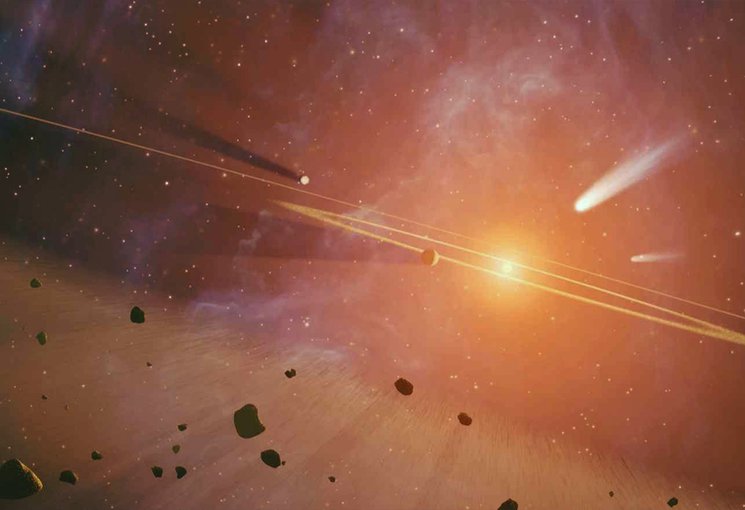
May 15, 2019
Research Highlight
From Planetesimals to Terrestrial Planets

Two comets head in toward a young solar system, with rings of rocky debris.Image credit: NASA/JPL.
A recent study provides new insight into the process by which planets in the inner Solar System may have accreted from the disk of gas and dust that surrounded the young Sun. The study presents numerical simulations for the continuous growth of planetesimals into terrestrial planets in the inner Solar System. Contrary to previous studies, the simulations indicate that the entire planet-forming disk never reaches a simple bi-modal mass distribution. Understanding how terrestrial planets were formed in our system can provide important information about the potential for habitable worlds around other stars.
The study, “Planetesimals to terrestrial planets: Collisional evolution amidst a dissipating gas disk,” was published in the journal Icarus. This work was supported by the Emerging Worlds Program. The NASA Astrobiology Program provides resources for Emerging Worlds and other Research and Analysis programs within the NASA Science Mission Directorate (SMD) that solicit proposals relevant to astrobiology research.